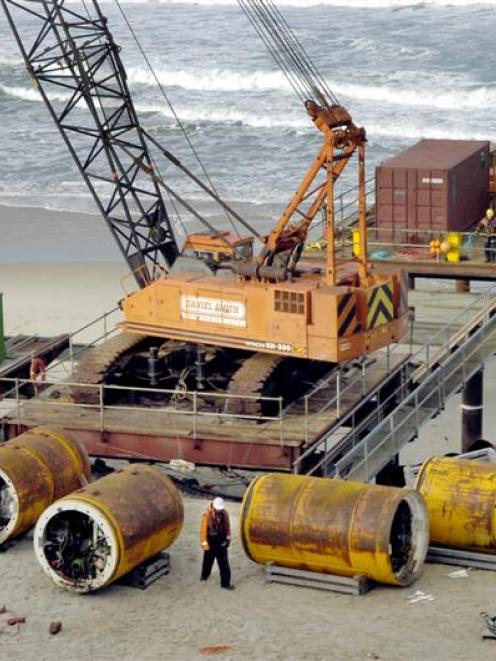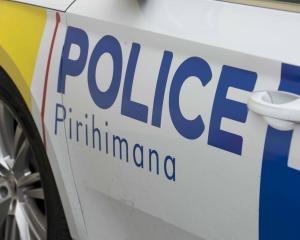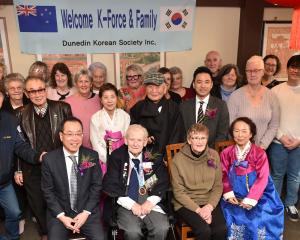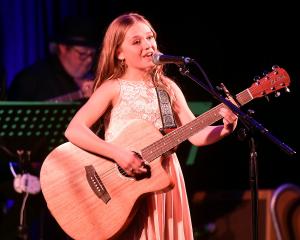
The machine, named last year by Dunedin City Council Tahuna upgrade project manager Brian Turner, bored a 1500mm-diameter tunnel underground from Tahuna to a point 250m off St Kilda beach to make way for a new sewage outfall pipe.
Because much of the work at the site was weather-dependent, Mr Turner said he was expecting an August commissioning date for the pipe, after earlier hopes it could be commissioned in April.
The pipe is part of a project to improve the quality of effluent processed at the Tahuna sewage-treatment station and dispose of it 1.1km out to sea, where the Dunedin City Council says it will more efficiently and quickly be diluted as it mixes with sea water.
Stage one includes the $37 million work on the pipe, a new pump station and installation of chlorination and odour-control facilities at the Tahuna plant, while stage two is the installation of a $67 million secondary-treatment system there.
The removal of Yvonne had to wait for a period of calmer weather and sea conditions, something that arrived in the past week.
"It came out very, very smoothly - according to plan," Mr Turner said, with rams inside the machine pushing it out of the tunnel it had made.
The machine's position in 5m of water meant any swell at the beach, or bad weather conditions, would have made removal work impossible.
Now it had been removed, transition sections of the tunnel, which would connect the underground pipe to pipe placed beneath the surf, could be put in place.
Those had been built in Christchurch, were being tested and, when suitable weather arrived, would be put in place and held there with concrete.
There would also be pressure-testing of the underwater pipe, using dye to make sure there was no leakage.
On land, work on odour control equipment was finished, a pumping station was all but finished, and "tidying up" work would be done in the next week.
Mr Turner said there had been no change to the project's budget.
Staff were working on what to do with the "solid waste" that is the end result of secondary treatment processing.
Options include composting, which has had limited success (this was because, while it worked well as compost, it was not a popular product), using the waste for landfill, or burning it, though combustion was not a good option, as it affected the environment.
There would be a possibility for public comment on the issue when the council applied for an air discharge consent for the waste, Mr Turner said.












